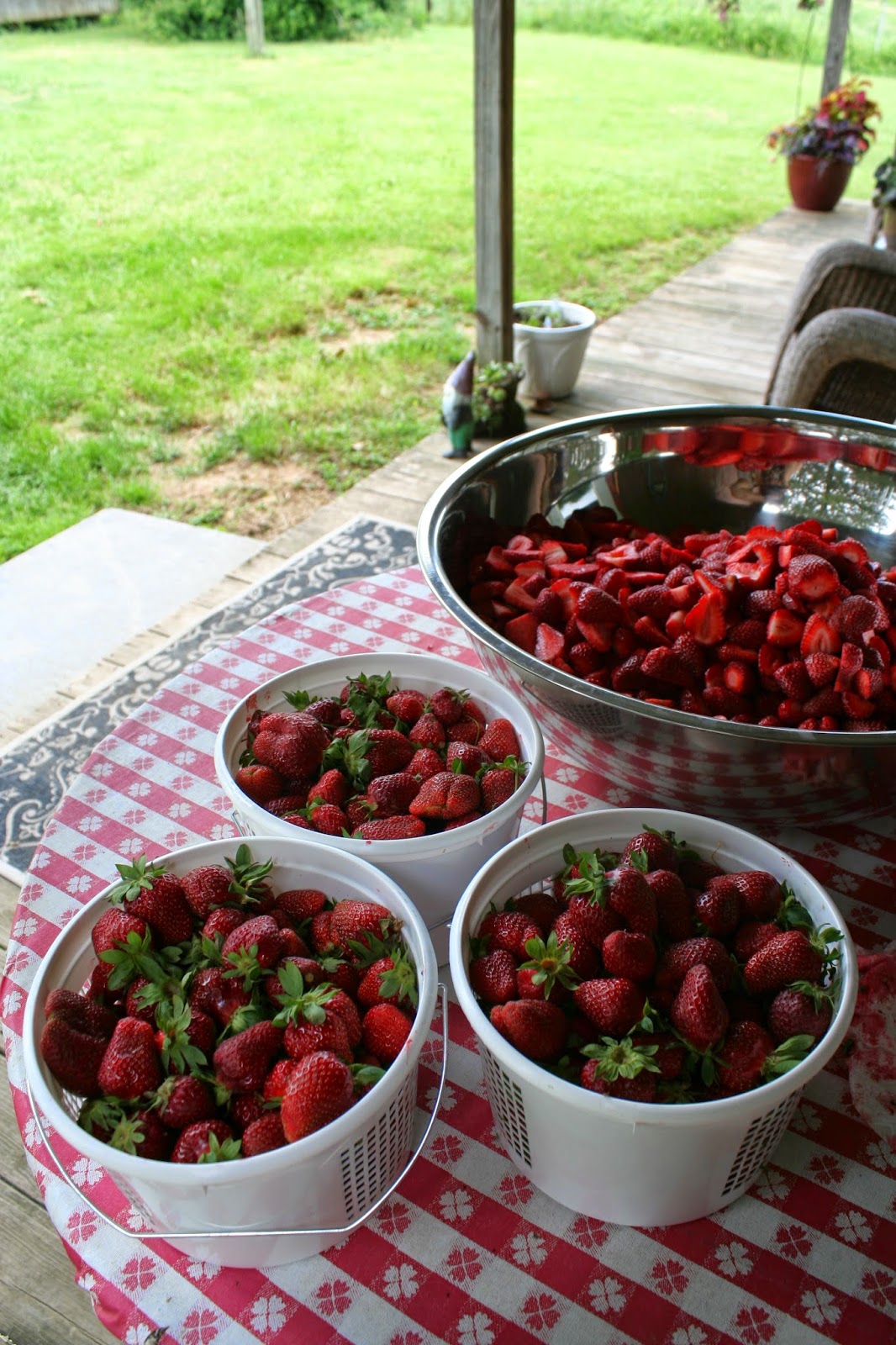I originally wrote this piece in January 2011 when I was just starting the blog. It needed a bit of updating, so here goes: [in RED] My family was also recently featured in a "Huffington Post" article on our journey from New Hampshire to our Kentucky ridge farm. The piece tells a bit more about our story.
Farming is not something out of the pages of a magazine, although old stuff and a big country kitchen helps. A lot. Here are some of the things I've learned so far in the past few years on our farm:
Farming is not something out of the pages of a magazine, although old stuff and a big country kitchen helps. A lot. Here are some of the things I've learned so far in the past few years on our farm:
- On a farm nothing happens overnight, except for frost (or a newborn animal).
- When it first frosts, Johnson grass produces cyanide so you can't let your cows near it for at least 24-hours. Fortunately, a nice neighbor told us this.
- Doublewides are not (technically) trailers, but they're not real houses, either. [But the local water department and everyone else calls them trailers.]
- Young fawns are all too easily maimed or killed by haying equipment. Soft-hearted, but insane, farmers care for injured deer, much to their joy and, sometimes, sorrow.
- Free-range chickens are adorable, until they poop all over your porch.
- When a neighbor says 'you be careful!' as you're leaving, they're not cautioning you about a hillbilly hit. It's a nice, friendly form of 'goodbye.' [But 'you come back when you're ready' is really less obtuse.]
- Clean cattle tanks make excellent places for a good cool bathe in a pinch. [Click here: view #11]
- Robert Frost was right: Good fences do make good neighbors. But he didn't say anything about when those fences are moved without permission or boundary lines are altered on maps.
- If you throw on an apron when someone is coming to the door, it goes very far towards tidying up.
- If you wear an apron around the farm, you don't have to wear a bra.
- Biscuits and sausage gravy make the best breakfast––and easy to make (the biscuits and the gravy, both). I can't believe it took me 45 years to even learn of this combination!
- Supper at 10pm is not uncommon during hay season when every ounce of daylight is utilized. [And fortunately, this is my more 'manic' time of year.]
- Boys love tractors. So do their fathers. [But on our farm I am only allowed to drive a riding lawnmower. There is good, but arguable, precedent for this.]
- A mud room is a must-have on a farm, ideally with a shower, or at least a nearby fire hose.
- The sound of absolute silence is absolutely lovely.
- It's great to have neighbors, but it's even nicer when they can't see you.
- If I didn't have satellite internet I could probably not be a farmwife. On a quiet ridge. In Kentucky...that is, until lightning strikes and knocks it out (August 2012) and you are promised DSL "soon." [As of May 2014 we now have DSL!]
- Do not name your animals if you intend to sell them or eat them.
- Learn how to put up a lot of your own food––canning or freezing––and buy a generator.
- Beware the reality that you might be conflicted about raising animals, caring for them, and then selling or eating them.
- Do not expect to make a regular pay check farming––or freelance writing.
- Learn to roll with the punches, the losses, the sorrow, the weather, the fickle income, or you won't make it as a farmer (or for that matter, most weather aside, as a freelance writer).
- When you see a rainbow or a newborn calf, the barn is full of hay, or cool breezes are blowing, say "AH!" and be glad: there might be a windstorm or drought another day, or a sickly cow.
- Enjoy the moment, plan for the future, but do not look back...EXCEPT when a bull is in your vicinity.
Catherine




































